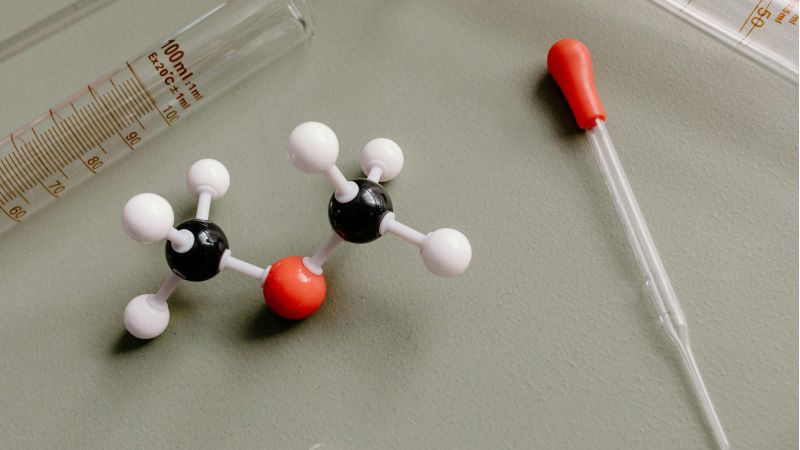
NAD IV Therapy Side Effects: What are the Risks?
NAD IV therapy promises incredible results, from boosting energy to supporting anti-aging.
But is it too good to be true?
While the benefits sound great, there are common side effects of NAD therapy, from minor discomfort to serious complications, that you shouldn’t ignore.
Are the risks really worth it?
In this article, we’ll dive into:
- The hidden safety concerns and side effects of NAD IV therapy that most people don’t talk about.
- Critical factors you should consider before deciding if NAD IV therapy is right for you.
- A safer alternative to NAD IV therapy that delivers results more efficiently without the downsides.

Recent studies show that by middle age, your NAD levels may drop to half of what they were in your youth1. This decline can impact everything from your energy to how quickly you recover from stress.
It’s no surprise that NAD IV therapy has been gaining popularity as a quick fix for restoring vitality and slowing down the aging process. But with any growing trend comes important questions, particularly around safety.
Is NAD IV therapy as risk-free as it sounds? While the claims are exciting, it’s important to look at both sides, hence we’ll also dig into the risks and side effects in this article.
What is NAD IV Therapy?

Imagine having a “battery” in every cell of your body, constantly fueling your energy, repairing DNA, and keeping everything functioning smoothly. That’s the role of NAD (Nicotinamide Adenine Dinucleotide), a coenzyme essential for cellular health.
As we age, our NAD levels start to dip, leaving many of us feeling fatigued, recovering more slowly, and even noticing changes in our mental clarity.2
That’s where NAD supplementation comes into play, with many people turning to NAD IV therapy to help recharge those cellular “batteries.” NAD IV therapy involves infusing NAD directly into your bloodstream through an IV drip, bypassing the digestive system for quicker, more efficient absorption. The treatment typically lasts around four hours or longer, allowing the NAD to enter your body slowly while you relax.
Advocates of NAD IV swear by its benefits: increased energy, sharper focus, improved mood, and even anti-aging effects. Some even say it aids in addiction recovery, boosts athletic performance, and helps with cellular repair.
Common Safety Concerns of NAD Therapy

While many people report positive experiences with NAD IV treatment, there are some risks to consider, especially if the treatment isn’t administered properly, including:
Infection
Any time you’re dealing with an IV, there’s a risk of infection.3
Since the skin is punctured, bacteria can enter your bloodstream if the equipment isn’t properly sterilized. To reduce this risk, it’s important to have the treatment administered by trained professionals in a clean, medical setting.
Vein Irritation
Some people experience irritation or inflammation around the injection site.4
This could be due to the needle size, the frequency of treatments, or simply how your body reacts to the IV. While it’s usually minor and resolves on its own, it can still be uncomfortable.
Incorrect Dosage
Getting the dosage right with NAD IV therapy is crucial. Too little, and you may not experience the full benefits. Too much, and you could feel nauseous or dizzy.
A qualified practitioner will know the correct dosage for your body and specific needs.
Improper Administration
IV therapy requires precision. The placement of the IV, the dosage, and the flow rate all need to be exactly right.
If the person administering the treatment lacks experience, things can go wrong. You could end up with a poorly inserted IV or air bubbles in the line, which could lead to complications.5
Quality and Sourcing of NAD Products
Not all NAD products are created equal. The quality and purity of the NAD solution being used are vital to ensure you get the best results with minimal risk.
It’s important to choose a clinic that uses high-quality NAD sourced from reputable suppliers. If you’re given an inferior product, you could miss out on the benefits—or worse, face unwanted side effects.
What are the Side Effects of NAD IV Therapy?

Like any treatment, NAD IV therapy can come with its own set of side effects. While they’re usually mild, it’s important to be aware of what you might encounter during or after your session.
Common Short-Term Side Effects
Most people who try NAD IV therapy report mild side effects that tend to go away quickly. These can include nausea, flushing, and dizziness during or shortly after the treatment.
Some also report muscle cramping or chest tightness as the body adjusts to the NAD infusion. Though these milder symptoms typically fade after the session, they can be uncomfortable while they last.
Possible Long-Term Side Effects
While NAD IV therapy shows promise, there are concerns about its long-term effects, especially with frequent or high-dose intravenous treatments.
Flooding the body with excessive NAD, sometimes up to ten times the normal range, could disrupt its natural balance. This is a particular concern with unregulated IV bars, where dosage and frequency may not be carefully monitored.
While NAD+ is vital for various cellular processes, excessively high levels of NAD+ could potentially lead to adverse effects such as mitochondrial dysfunction or sirtuin overactivation.
NAD IV therapy has also been observed to cause a significant increase in high-sensitivity C-reactive protein (hs-CRP) levels in a substantial portion of recipients. Specifically, about 70% of individuals undergoing NAD IV therapy experience a 3- to 10-fold increase in hs-CRP, which is an acute phase reactive protein that indicates inflammation. To safeguard patient well-being, it is recommended to monitor hs-CRP levels and implement effective strategies to control inflammation.
If you are concerned about levels of inflammation, our at-home inflammation test kit, the AgingSOS® Senescence & NAD Panel, can help you reveal your inflammation status and take appropriate action.
The Safest Approach to NAD IV Therapy

If you’re considering NAD IV therapy, safety should be your top priority. Here are a few key steps to ensure a safe and effective experience:
Choose a Qualified Provider
Your first step should be finding the right provider. Look for a licensed and experienced practitioner who specializes in NAD IV therapy.
Ask about their qualifications, experience with NAD treatments, and the safety protocols they follow. A reputable provider will gladly answer your questions and ensure you feel comfortable before moving forward.
Evaluate Your Health
Before starting any NAD IV therapy, it’s crucial to get a thorough health evaluation. Your provider should review your medical history, current medications, and any existing health conditions.
This helps determine whether NAD therapy is safe for you and allows them to tailor the treatment to your specific needs. Skipping this step could increase the risk of complications.
Monitor Your NAD Levels Regularly
To get the most out of NAD IV therapy and minimize risks, it’s also important to monitor your NAD levels.
The most effective way to do this is using an Intracellular NAD test, which measures the NAD levels within your cells. Keeping track of these levels during and after your sessions helps avoid issues like overdosing or underdosing.
This ongoing evaluation allows your practitioner to adjust your treatment for optimal results.
Oral NAD Supplements: A Safer Alternative to NAD IV Treatment

While NAD IV therapy is popular for its quick delivery, it’s not the only option for boosting NAD levels. In fact, many people opt for an oral NAD+ supplement due to safety and convienience.
One big difference is how they work.
NAD IV therapy directly introduces the coenzyme into the bloodstream, but it is quickly metabolized and excreted, resulting in a short-lived effect.
Oral supplements, such as sublingual NAD powder, get absorbed by your cells and work from the inside out, helping to increase your body’s NAD+ levels gradually and sustainably. Plus, they’re much easier on the wallet and your schedule.
NAD IV can be both pricey and time-consuming, often costing hundreds per session and taking up to four hours or even more. In contrast, supplements are way more budget-friendly and easy to take, whether you’re at home or on the move. They fit right into your daily routine without any hassle.
Final Thoughts: Is NAD IV Therapy Safe?

NAD IV therapy has its benefits, but it’s not without risks. You might experience mild side effects like nausea or dizziness, or more serious issues like infections.
Safety is a big deal, especially if you’re thinking about using it long-term. It’s important to weigh these risks and talk to a qualified provider about whether it’s right for you. Take your time to weigh the pros and cons and find out if it suits your needs.
Also, don’t overlook safer alternatives like oral supplements. They work at the cellular level, naturally boosting NAD without the risks tied to IV treatments.
They also offer a more consistent, long-term boost, fueling your energy and overall health. Plus, you can take them anywhere, anytime, making them a hassle-free part of your daily routine.
So, if you’re seeking an effective, low-risk option to optimize your NAD levels and overall well-being, oral supplements may just be the better choice.
The best part? You can start today—without the needles or lengthy appointments.
Referenced Sources
- https://www.frontiersin.org/journals/endocrinology/articles/10.3389/fendo.2022.829658/full ↩︎
- https://www.ncbi.nlm.nih.gov/pmc/articles/PMC7963035/ ↩︎
- https://www.ncbi.nlm.nih.gov/pmc/articles/PMC6650670/ ↩︎
- https://www.health.harvard.edu/blog/drip-bar-should-you-get-an-iv-on-demand-2018092814899 ↩︎
- https://www.healthline.com/health/intravenous-medication-administration-what-to-know#side-effects ↩︎
Read More














